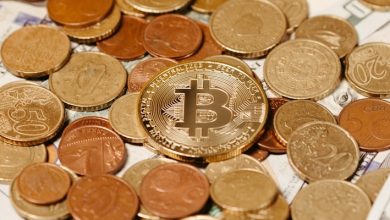Top Coins Leading the DeFi Sector in 2024

- Introduction to the DeFi sector
- Key players in the DeFi industry
- Evaluating the growth of DeFi coins
- The future of decentralized finance
- Challenges and opportunities in the DeFi space
- Investing in the top DeFi coins
Introduction to the DeFi sector
The decentralized finance (DeFi) sector has been experiencing rapid growth and innovation in recent years, revolutionizing the traditional financial system. DeFi projects aim to provide financial services without the need for intermediaries, offering users greater control and transparency over their assets. As we look ahead to 2024, it is clear that the top coins leading the DeFi sector will play a crucial role in shaping the future of finance. These coins have gained popularity for their unique features and strong communities, making them standout performers in the DeFi space.
One of the top coins in the DeFi sector is Ethereum (ETH), known for its smart contract capabilities and decentralized applications (dApps). Ethereum has been a pioneer in the DeFi space, enabling developers to create innovative financial products such as decentralized exchanges, lending platforms, and yield farming protocols. With its large user base and active developer community, Ethereum continues to be a dominant force in the DeFi ecosystem.
Another prominent player in the DeFi sector is Binance Coin (BNB), the native token of the Binance Smart Chain (BSC). BNB has gained popularity for its low transaction fees and high-speed transactions, making it an attractive choice for DeFi users. Binance has also launched its own decentralized exchange (DEX) called PancakeSwap, which has quickly become one of the most popular DeFi platforms on the BSC network.
Aave (AAVE) is another key player in the DeFi sector, known for its innovative lending and borrowing protocols. Aave allows users to earn interest on their cryptocurrency holdings by providing liquidity to the platform or borrowing assets to leverage their investments. With its user-friendly interface and wide range of supported assets, Aave has become a go-to platform for DeFi enthusiasts looking to maximize their returns.
Overall, the DeFi sector is poised for continued growth and evolution in the coming years, with top coins like Ethereum, Binance Coin, and Aave leading the way towards a more decentralized and inclusive financial system. As investors and users alike continue to embrace DeFi technologies, these coins are likely to remain at the forefront of innovation, driving the sector forward into a new era of finance.
Key players in the DeFi industry
Some of the key players in the decentralized finance (DeFi) industry include prominent cryptocurrencies like Ethereum, Chainlink, and Uniswap. These coins have been leading the way in the DeFi sector due to their innovative technologies and strong communities.
Ethereum, often referred to as the ‘king of DeFi,’ is the most widely used blockchain for decentralized applications (dApps) and smart contracts. Its native token, Ether (ETH), serves as the backbone of many DeFi projects, providing liquidity and enabling transactions within the ecosystem.
Chainlink is another important player in the DeFi space, offering decentralized oracles that connect smart contracts with real-world data. This technology is crucial for enabling DeFi platforms to access external information securely and reliably.
Uniswap, a decentralized exchange (DEX) built on the Ethereum blockchain, has also gained significant traction in the DeFi sector. Its automated market maker (AMM) model allows users to trade cryptocurrencies directly from their wallets, without the need for intermediaries.
These key players have been instrumental in driving the growth of the DeFi industry, providing users with new ways to access financial services and participate in the decentralized economy. As the sector continues to evolve, these cryptocurrencies are likely to maintain their dominant positions and shape the future of decentralized finance.
Evaluating the growth of DeFi coins
DeFi coins have experienced significant growth in recent years, with many investors flocking to these digital assets in search of high returns. Evaluating the growth of DeFi coins can provide valuable insights into the potential of these cryptocurrencies in the future.
One way to assess the growth of DeFi coins is to look at their market capitalization. This metric reflects the total value of a cryptocurrency in circulation and can give an indication of its popularity and adoption. Coins with a high market capitalization are often seen as more established and less volatile, making them attractive to investors looking for stability.
Another factor to consider when evaluating the growth of DeFi coins is their trading volume. High trading volume indicates that there is a strong demand for a particular coin, which can drive up its price and increase its market capitalization. Coins with high trading volume are also more liquid, meaning that they can be bought and sold quickly without significant price fluctuations.
In addition to market capitalization and trading volume, it is important to consider the technology and partnerships behind DeFi coins. Coins that have strong technology fundamentals and strategic partnerships with other companies in the cryptocurrency space are more likely to succeed in the long run. These factors can help drive adoption and increase the value of a coin over time.
Overall, evaluating the growth of DeFi coins requires a comprehensive analysis of various factors, including market capitalization, trading volume, technology, and partnerships. By taking these factors into account, investors can make more informed decisions about which coins to invest in and potentially profit from the growth of the DeFi sector in the coming years.
The future of decentralized finance
When looking at the future of decentralized finance (DeFi) in 2024, it is clear that the sector is poised for continued growth and innovation. DeFi has already revolutionized the traditional financial industry by providing decentralized alternatives to traditional banking services. As more people become aware of the benefits of DeFi, the sector is expected to attract even greater investment and adoption in the coming years.
One of the key trends that is expected to shape the future of DeFi is the continued rise of decentralized exchanges (DEXs). DEXs allow users to trade cryptocurrencies directly with one another, without the need for a centralized intermediary. This not only reduces the risk of hacks and fraud but also provides users with greater control over their assets. As DEXs become more user-friendly and efficient, they are likely to become the preferred choice for many cryptocurrency traders.
Another trend that is expected to drive the growth of DeFi in 2024 is the increasing integration of decentralized finance protocols with traditional financial services. This convergence of DeFi and traditional finance has the potential to unlock new opportunities for both sectors, enabling greater access to financial services for people around the world. As DeFi protocols become more interoperable with traditional financial systems, we can expect to see a blurring of the lines between the two, leading to a more seamless and inclusive financial ecosystem.
Challenges and opportunities in the DeFi space
The DeFi space presents a plethora of challenges and opportunities for investors and developers alike. One of the key challenges is the issue of security, as the decentralized nature of DeFi platforms can make them vulnerable to hacks and other malicious activities. However, this also presents an opportunity for innovative solutions to enhance security measures and protect user funds.
Another challenge in the DeFi space is the issue of scalability, as the increasing popularity of DeFi platforms has put a strain on existing infrastructure. This presents an opportunity for developers to create more efficient and scalable solutions that can support the growing demands of the DeFi ecosystem.
Regulatory uncertainty is also a major challenge in the DeFi space, as regulators around the world are still grappling with how to classify and regulate these new financial instruments. However, this presents an opportunity for DeFi projects to work with regulators to establish clear guidelines and compliance measures that can help legitimize the industry.
Overall, while there are certainly challenges facing the DeFi space, there are also numerous opportunities for growth and innovation. By addressing these challenges head-on and capitalizing on the opportunities they present, the DeFi sector is poised for continued success in the years to come.
Investing in the top DeFi coins
Investing in the top decentralized finance (DeFi) coins can be a lucrative opportunity for those looking to diversify their investment portfolio. In 2024, the DeFi sector continues to grow rapidly, with several coins leading the way in terms of market capitalization and adoption.
- One of the top DeFi coins to consider investing in is Ethereum (ETH). As the leading smart contract platform, Ethereum is the foundation for many DeFi projects, making it a solid choice for investors looking to capitalize on the growth of the sector.
- Another promising DeFi coin is Uniswap (UNI), a decentralized exchange protocol that allows users to swap various tokens without the need for a centralized intermediary. UNI has seen significant growth in recent years, making it a popular choice among DeFi investors.
- Compound (COMP) is also worth considering for those looking to invest in DeFi coins. As a decentralized lending platform, Compound allows users to earn interest on their crypto assets by lending them out to borrowers. With the increasing demand for decentralized finance solutions, COMP could be a valuable addition to your investment portfolio.
Overall, investing in the top DeFi coins can provide you with exposure to the rapidly growing decentralized finance sector. By diversifying your portfolio with coins like Ethereum, Uniswap, and Compound, you can potentially benefit from the continued growth and adoption of DeFi technologies in 2024 and beyond.



